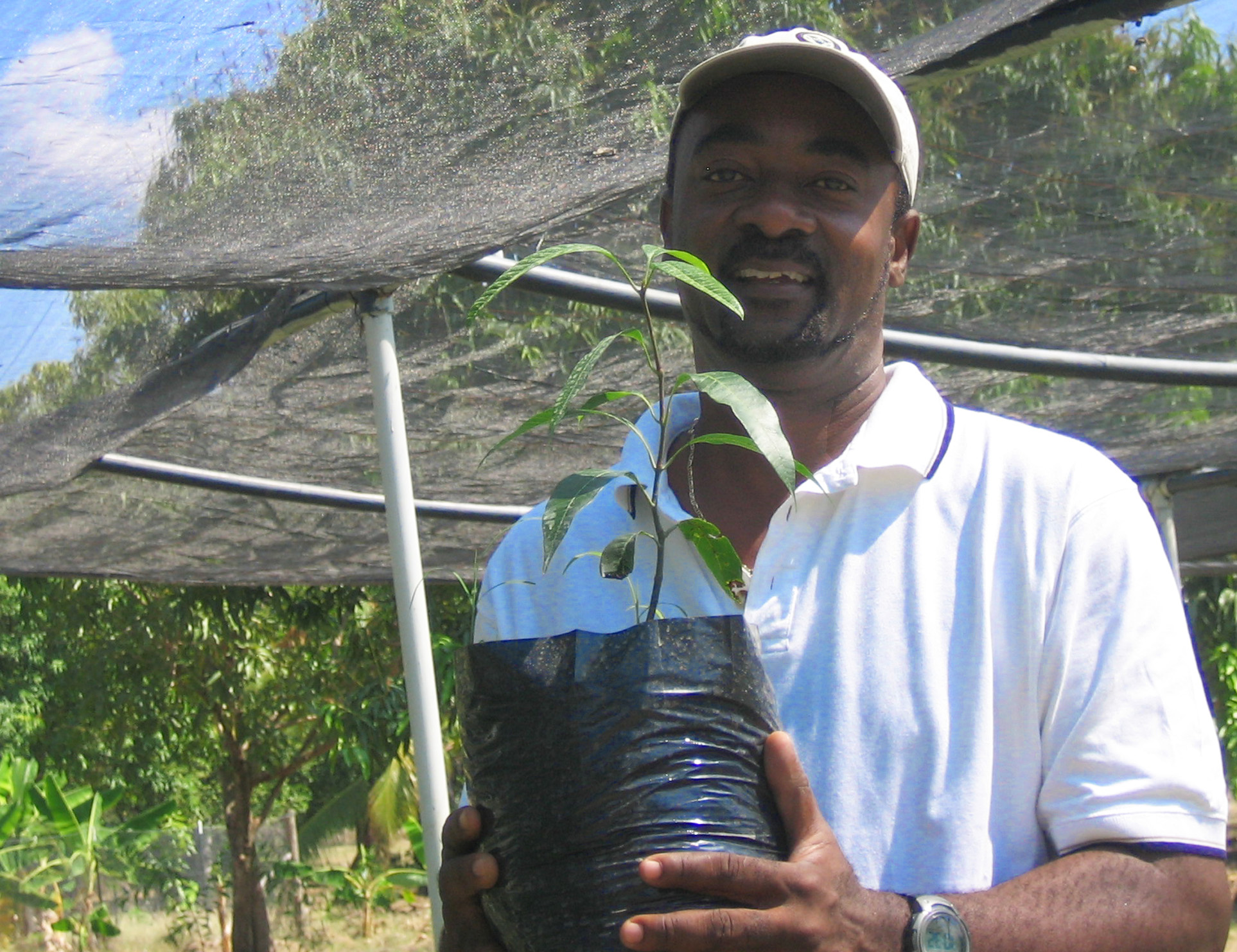Back to the earth in Haiti -- Virginia Tech team improves soils

News reports describing the destruction in Port-au-Prince or even the pre-earthquake denuding of Haiti’s mountains fail to capture the beauty of the Central Plateau. It is there – under azure skies, on land ringed by mountains and dotted with mango, banana, and palm trees – that Virginia Tech researchers hope to use conservation agriculture to bring about a rebirth of productive farming.
As a woman walks by the project site carrying a container of water on her head, project advisor Jim McKenna, recently retired from Virginia Tech’s Department of Crop and Soil Environmental Sciences in the College of Agriculture and Life Sciences, explains the features of conservation agriculture. “It’s a system of minimum soil disturbance and environmental impact. It includes minimal tillage, cover crops, and crop rotation.”
The benefits of conservation agriculture — greater water retention in the soil and better soil health — are not immediate, but this is because “it takes awhile to create a new equilibrium,” McKenna says. Minimal tilling reduces soil disturbance, which increases soil carbon, essential for soil health. Maintaining a year-round soil cover controls erosion and also increases soil carbon. And rotating crops improves soil health and discourages pests.
“Haiti was historically the garden spot of the Caribbean,” says Michael Bertelsen, agricultural economist and associate director of Virginia Tech’s Office of International Research, Education, and Development. Over the centuries, the soil has been mined through intense cultivation, leaving it largely depleted of nutrients. Land in the Central Plateau, because of its remote location, is relatively less degraded. This is where the Virginia Tech-Haitian team has chosen to site its research at three different locations.
Each place – Corporant, Boucan Carré, and Maïssade – is at a different elevation and has different soil and water conditions. At each site, a small-farm resource and teaching center will be built.
“We are focusing on the highlands in Haiti,” McKenna says. “As in any country, the more inaccessible the area, the poorer it is.”
One hope in conducting the project in a rural area far from Port-au-Prince is that if the venture succeeds, people will be encouraged to return to the countryside. This will relieve some of the population pressure on cities. Port-au-Prince, designed for 150,000 people in 1749, was home to 2.5 million people before the Jan. 12 earthquake.
Specifics of the project involve more than working with farmers to implement conservation agriculture techniques. Researchers are also conducting trials to see if they can find varieties of beans that might be more productive and better suited for the harsh conditions of Haiti.
“We are testing six black bean varieties, including three from the Caribbean that may have some adaptability to the region as well as disease resistance, and three from North America with high-yielding potential,” says graduate student Laura Maupin, who is assisting with the project. Maupin, of Altamont, Ill., will be graduating this semester with a Ph.D. degree in crop and soil environmental sciences from the Colleges of Agriculture and Life Sciences.
In development work, experts often focus on numbers and results to prove a project’s effectiveness. How many roads were built? How many children were vaccinated? This is important, of course, but intangibles are often just as critical. Keith Moore, associate program director of the Sustainable Agriculture and Natural Resource Management Collaborative Research Support Program, says, “Trust is necessary to move forward. Including partners that have never before worked together will require patience and a willingness to negotiate strong, new relationships.” Moore cautions that “social learning is not a linear process.”
Robert Badio, director of fisheries and aquaculture in Haiti’s Ministry of Agriculture, is nonetheless optimistic. “I am very confident,” he says, standing in the shade of a mango tree. “So far, we are on a good path. We have some good partners; they are dedicated to work on the success of the project.” What’s more, he notes, “The team works with the farmers directly.”
The five-year project, titled A Conservation Agricultural Production System for the Central Plateau, draws together Virginia Tech experts from a range of disciplines as well as a gender specialist, a forester, and a rural sociologist. Haitian partners include the Ministry of Agriculture and National Resources, Zanmi Agrikol (Friends of Agriculture, a partner organization to Paul Farmer’s Partners in Health), and the State University of Haiti. Caritas/Hinche, a local Catholic organization, is also a partner. The project is funded by the United States Agency for International Development, the branch of the U.S. government that administers foreign aid.




